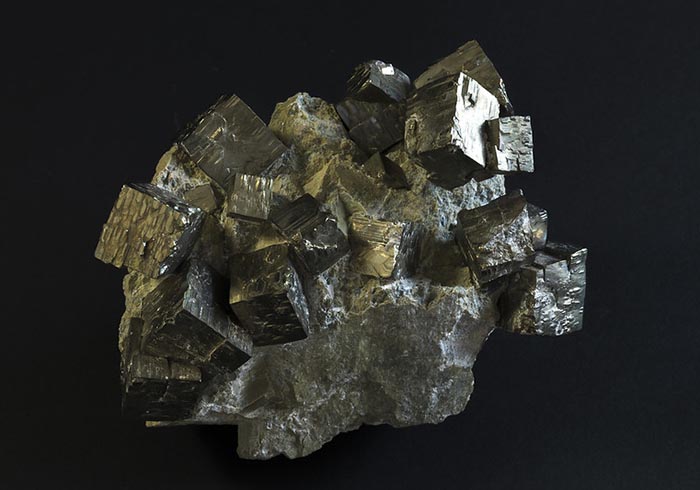Pyrite. Adding cubes with penetration twins. M[UV]HN.
Pyrite is an iron sulfide of an extraordinary golden color. It has been known since ancient times as the "gold of fools" because of its resemblance to this precious metal. The "Expansion to Victoria" pyrite site to which this specimen belongs is located in the town of Navajún (La Rioja). The site was discovered in 1965, and today it has become a world reference in the field of mineralogy, both for its particular genesis (hydrothermal metamorphism), and for the spectacular nature of its specimens. The opposite crystals in this deposit adopt a morphology that makes them different from the rest of the deposits, they are perfect cubes, with edges of ninety degrees and completely flat faces. The pyrites are scattered in marly levels of metric thickness and have sizes up to 12 cm side, metallic luster and brass yellow color (when not oxidized). The origin is by hydrothermal metamorphism, related to an increase in temperature of the rocks and a circulation of fluids inside the sediment. This causes a transformation in the original composition of the rock, giving rise to new minerals, such as pyrites, stables in the new conditions. The museum of the University of Valencia of Natural History has historical specimens of 12 centimeters of edge and numerous pieces in matrix with crystals of different sizes.


















